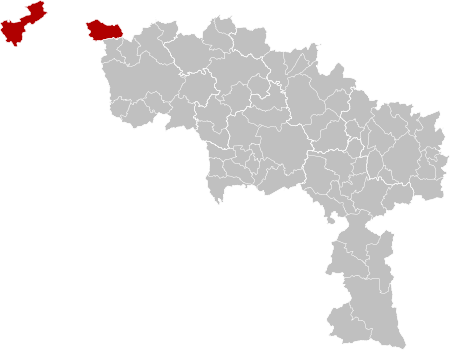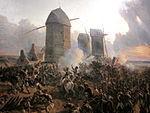Arrondissement of Mouscron
Former arrondissements of BelgiumHainaut geography stubs

The Arrondissement of Mouscron (French: Arrondissement de Mouscron; Dutch: Arrondissement Moeskroen) is a former arrondissement in the Walloon province of Hainaut, Belgium. It is not a judicial arrondissement. Its municipalities are a part of the Judicial Arrondissement of Tournai. The arrondissement was created in 1963 after several municipalities were transferred from the Dutch-speaking province of West Flanders to French-speaking Hainaut following the language laws of 1962. In 2019 it was merged into the new Arrondissement of Tournai-Mouscron.
Excerpt from the Wikipedia article Arrondissement of Mouscron (License: CC BY-SA 3.0, Authors, Images).Arrondissement of Mouscron
Rue du Nouveau Monde - Nieuwe Wereldstraat,
Geographical coordinates (GPS) Address Nearby Places Show on map
Geographical coordinates (GPS)
| Latitude | Longitude |
|---|---|
| N 50.75 ° | E 3.2 ° |
Address
Rue du Nouveau Monde - Nieuwe Wereldstraat 209
7700 (Mouscron - Moeskroen)
Hainaut, Belgium
Open on Google Maps










